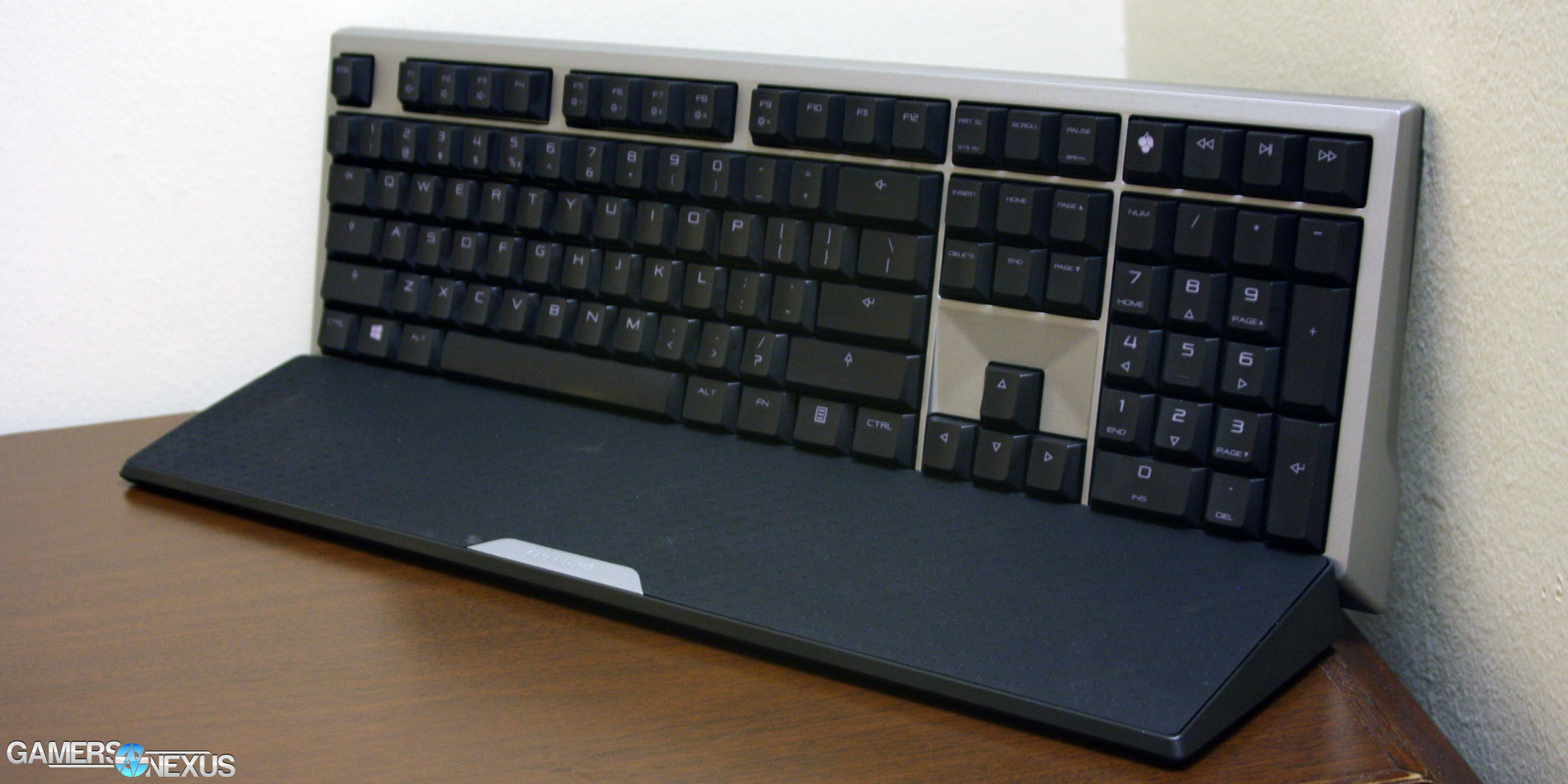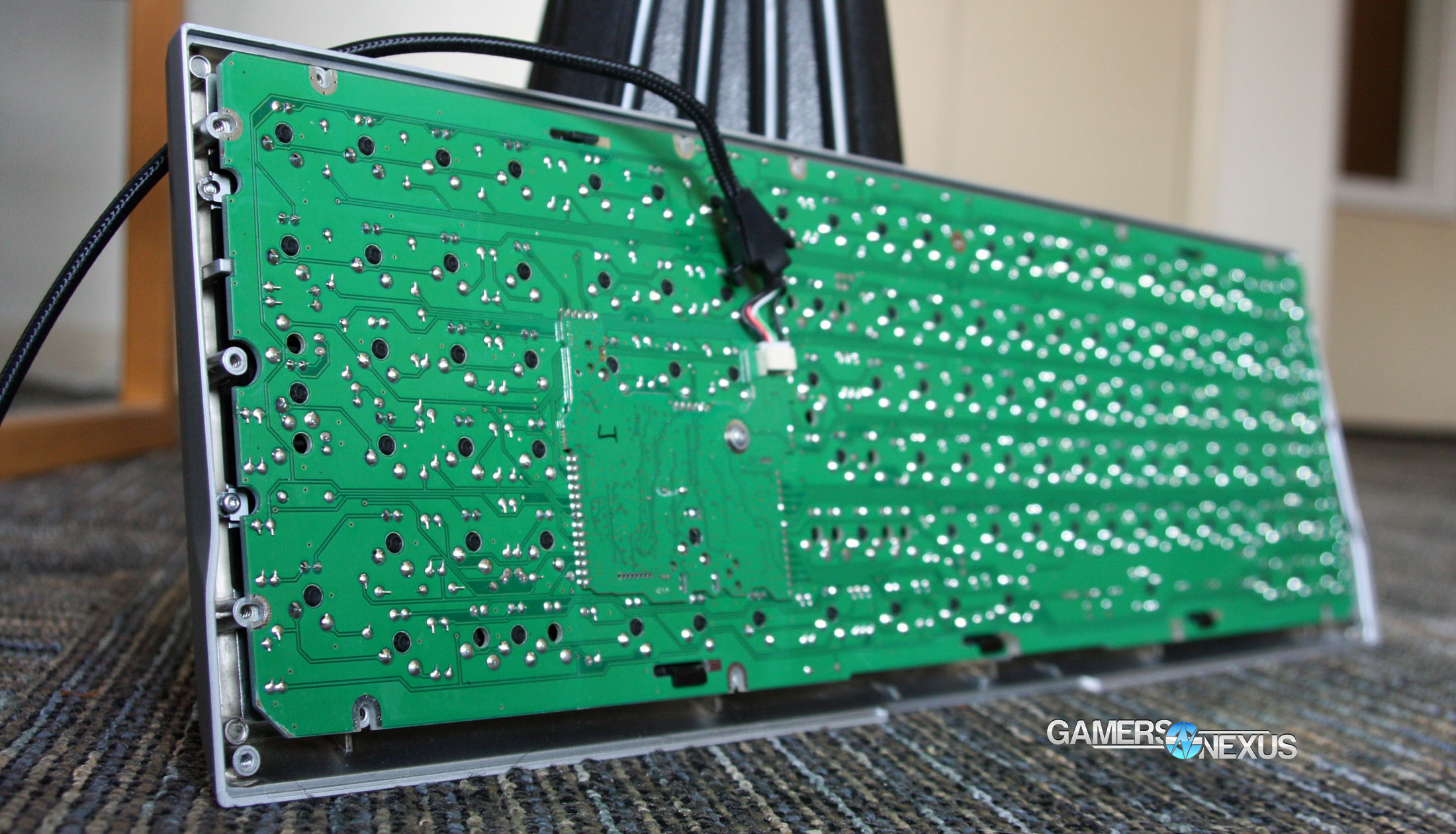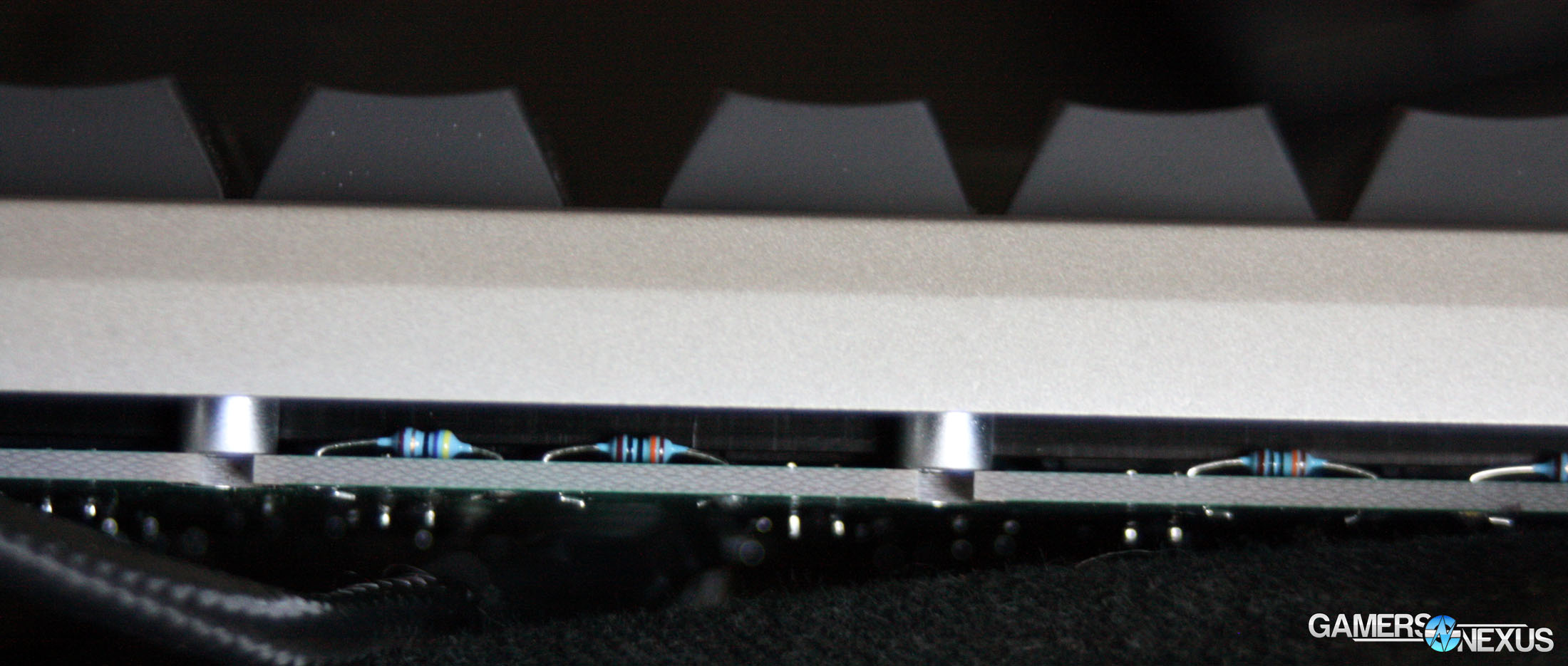Cherry MX switches have long been well-regarded in the keyboard community. They were first introduced in 1983, and since then have become commonplace in the mechanical keyboard market – which was the only keyboard market before the invention of rubber domes. Yet Cherry not only produces MX switches for other keyboards, but also produces keyboards – and claim to be the oldest keyboard manufacturer still in business.
One of the most recent additions to Cherry’s keyboard lineup is the Cherry MX 6.0 – not exactly the cleverest name – which aims to be a high-end keyboard meant to suit both typists (such as office workers) and gamers alike. It features MX Red switches, a moderately reserved style, red backlighting, an excellent build quality, Cherry Realkey, and a hefty price of $176.
Cherry MX 6.0 Specifications
- Cherry MX Red switches
- Cherry Realkey
- Controllable red backlight
- N-key rollover
- Detachable rubberized palm rest
- Dedicated Media Keys
- 2-year warranty
Typing Experience & Media Keys
Much of Cherry’s marketing around the MX 6.0 has been geared towards it being the superior keyboard in terms of response time; in fact, Cherry claims that it is the “world’s fastest keyboard.” Part of the reason it is so supposedly fast is the inclusion of Cherry’s Realkey technology, which is essentially fully analog signal processing (rather than digital processing). Cherry claims that traditional digital methods of key detection like matrix scanning (with diodes to eliminate key ghosting) generally have 20ms of delay, whereas Realkey has only 1ms.
Realistically, the decrease from 20ms to 1ms can be fairly substantial, especially in competitive gaming. Many high-level gamers would be ecstatic to have their ping go from 120 to 101, yet we can’t say that we ever noticed a difference in response time using the MX 6.0. By no means have we experienced any lag using the board, but we’ve also not noticed the MX 6.0 being faster than our other keyboards even after switching back and forth.
The MX 6.0 comes with MX Red switches, which are certainly useful when playing games that require double-tapping, but the sole option of Red switches places this keyboard is a somewhat strange position. It is marketed as a keyboard for gaming and typing, the former of which it performs well at, but generally tactile switches are considered to be better for typing. The included wrist rest for the MX 6.0 is comfortable and stays with the keyboard as a result of the magnets used to secure it.
Like many higher-end keyboards, the media keys on the MX 6.0 are dedicated, but the volume and lighting control are function-based. In fact, the MX 6.0 has a unique feature in which the function key can be toggled on and off. When the function key is toggled on, the F keys automatically default to their media functions (so any other use of the F keys isn’t available). This improves upon the use of volume and lighting controls, making them so many users don’t have to worry about holding down the function key during gameplay (and only need hit a F key). Unfortunately, this causes issues for some games. In DotA 2, for example, the F1 key is used to select and center the camera on the player’s hero. When the function key is toggled on, rather than selecting and focusing on the player’s hero, the PC’s volume is muted. For many users, the toggleable function key has little use. Luckily when the function key is toggled off, it works normally and just has to be held down while F keys are pressed. Overall, the toggleable function key is handy, but potentially problematic for some users.
The MX 6.0 – expectantly– uses Cherry-style stabilizers for the larger keys.
Keycaps
As is the standard for most keyboards, the MX 6.0 comes with thin painted ABS keycaps with shine-through legends for when the backlight is on. This is fairly normal, although it would be nice to see premium keyboards like the MX 6.0 include higher quality keycaps.
The keycap spacing on the Cherry MX 6.0 is standard, which allows for keycaps to be easily replaced with aftermarket sets. With this in mind it would be appropriate for Cherry to include a keycap puller with the MX 6.0, but luckily they are often included in keycap sets and are easy to make with paper clips. In fact, the keycaps on the MX 6.0 are surprisingly loose and can often be easily pulled off with just one’s hand. This isn’t a flaw, per-se, but rather is just somewhat out of the ordinary.
Lighting
The MX 6.0 features an adjustable – in intensity – red backlight and also has blue activation backlights for keys like CAPS lock and scroll lock. At full brightness the backlight is certainly brighter than many other backlit keyboards like the Corsair Strafe RGB and Thermaltake Poseidon Z RGB.
Build Quality & Aesthetics
One of the strongest traits of the Cherry MX 6.0 is its build quality. Rather than using plastic – a generally more budget-friendly option – the Cherry MX 6.0 uses a metal housing. This helps to make it sturdy and also gives it a fair bit of heft. The USB cable is not removable – despite the way it looks – but has a high-quality braid to protect it.
The internal build quality of the MX 6.0 reflects the outside in its fine touches. There is absolutely no solder flux and the soldering is immaculate. Interestingly enough, the diodes and resistors Cherry uses are through hole, rather than surface mount.
Aesthetically the MX 6.0 has a unique style – one that I am quite fond of. The silver aluminum and sleek lines gives it the look of what people in the 60s thought gadgets would look like. Nevertheless, the MX 6.0’s fairly sleek, but not overtly flashy, style makes it stand apart from many higher-end gaming keyboards (which often either look edgy or simply plain). The included wrist rest fits the style of the keyboard well, but the rubberized portion on the top of it is covered in “MX” indents. Blatant branding aside, these indentions collect dirt – and dead skin – easily and noticeably against the black rubber.
The MX 6.0 comes with a 2-year warranty, which with its high-end price point, is underwhelming.
Conclusion
From the time we initially started using it, we’ve been consistently pleased by the Cherry MX 6.0. Typing on it is pleasant, its style is sleek and unique, features a red backlight, and the wrist rest is comfortable and useful – even if it is a little heavy on the branding.
Unfortunately, while the MX 6.0 is a great keyboard in many respects, it feels quite lackluster in its feature set in comparison to many of the keyboards around – and even below – its price point of $176. For instance, the Cherry MX 6.0 lacks reprogrammability and RGB lighting. For instance the Corsair K70 RGB Lux has basically all the features of the MX 6.0, while only costing $128 and having additional features like RGB lighting.
Nonetheless, the Cherry MX 6.0 is not a bad keyboard per-se, but rather it has a more specific audience than other keyboards. High-end keyboards that lack traditional features – like RGB lighting – need to have some sort of unique feature that appeals to a particular audience. Some keyboards like the Poker 3 have unique layouts, for the Cherry MX 6.0 its Realkey and style. The MX 6.0 truly appeals to those who want a sleek looking keyboard and/or want the minimum response time possible. So for consumers looking for that, the MX 6.0 makes sense, but for most users the high price point of $176 places it in an awkward position.
Hopefully Cherry Realkey is implemented in more keyboards in the future to give those needing every small advantage more options in what keyboard they use.


